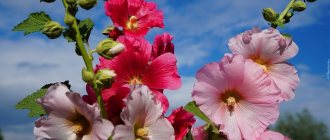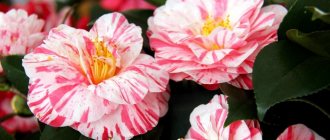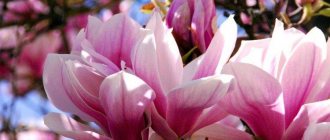general description
The concept of “decorative onion” unites varieties that, during flowering, produce beautiful lush inflorescences with a diameter of 4-7 cm. Their shape can be different: spherical or in the form of a hemisphere. In very rare cases, it becomes like an umbrella or a cylinder. Flowers always have six elements in the form of stars, bowls or bells.
The plant begins to bloom somewhere in June, this period lasts on average three weeks (it all depends on the chosen variety). The rest of the time, all varieties of this species are no different from edible onions: green leaves, similar to feathers, stretch upward from under the ground. Their height can reach 180 cm.
The foliage of the ornamental onion is the same as that of the regular edible species Source cutdriedflowerfarm.com
Almost all types of decorative onions are unpretentious and easy to care for. They can withstand frosts, plants easily adapt to the lack of light, and they are also not afraid of the scorching sun. The only thing you need to do is protect the onions from the wind during flowering. The inflorescences are heavy, so they break easily.
The inflorescences are heavy, the stems underneath them easily break from strong winds Source c.pxhere.com
Popular varieties
Decorative species are created through selection. There are a huge number of different varieties, so choosing something suitable for decorating a flower bed will not be difficult. The most popular among gardeners are:
“Neapolitan” onion is a plant that grows no higher than 35 cm. It begins to bloom in July, at which time snow-white buds appear on thin green stems. When they open, they form a beautiful bell. Its diameter is 5 cm. Under the weight of the bud, the stems bend towards the ground, which makes it seem as if the onion is constantly bowing. The bush looks modest, but very elegant. The plant does not tolerate cold well; it is only suitable for growing in zones with a subtropical climate.
Low bushes with white bells Source 3.bp.blogspot.com
Onion "Molly" is a plant that grows no higher than 25 cm, has flat green glossy leaves with a crease in the middle. It begins to bloom at the very end of June, the buds open and in their place bright yellow flowers similar in shape to lilies appear. Against the background of greenery they look simply magnificent. In the shade, the inflorescences noticeably lose their brightness.
Perennial variety with lily-like flowers Source cdn.shopify.com
“Pretty” onion is a plant that grows up to 60 cm in height. It blooms in July, when loose lilac inflorescences appear on long stalks, outwardly similar in shape to a fountain or launched fireworks.
Loose lilac inflorescences Source img4.goodfon.ru
Narcissiflora onion is a mountain plant that grows to a height of no more than 25 cm. It has long, narrow leaves that are flat and emerald green, and flowers of red, wine-burgundy color, similar to the inflorescences of a narcissus. The plant can be planted in shady places; with a lack of sunlight, onion flowers do not lose their juiciness and brightness.
Decorative royal blue onions - varieties of this type are ideal for group plantings. In June they bloom very beautifully: long green legs are crowned with fluffy balls of sky blue color. The diameter of some reaches 10 cm. Small inky purple bulbs form next to the opened buds. All together it looks great.
Large sky blue balls Source 3.bp.blogspot.com
Ostrovsky onion likes to grow on rocky soil, so this plant is ideal for decorating rock gardens and rock gardens. It blooms very early (in May, June), the bright purple flowers are shaped like an umbrella. They always look up and are framed on their sides by long, sharp leaves. One bush grows up to 40 cm in height; outwardly it looks like a well-decorated bouquet.
Beautifully decorated inflorescences Source upload.wikimedia.org
See also: Catalog of stone garden gazebo projects.
The Chameleon variety was bred by breeders specifically for northern latitudes. The plant tolerates cold well, grows up to 60 cm in height. It blooms almost all summer (from June to August). At this time, a spherical inflorescence with an ash-pink color flaunts on a long green stem. There is a crimson stripe in the center of each petal. This type of onion got its name because the plant changes its color depending on the degree of illumination: the stronger the sun, the brighter the flower, the juicier the greens.
This bow loves the sun very much Source cdn.pixabay.com
Ephemeroids
This group of plants differs from others in their short growing season. It lasts one season, peaking in the second half of spring. At this time, the plant grows to its minimum size, blooms, and pleases with its beauty. The rest of the time the bulbs are in a state of complete dormancy. Experienced gardeners, knowing this, dig them out of the ground, dry them and store them in a dark, dry room. By spring, the bulbs are planted in the soil again. Among plants of this kind there are also varieties of onions.
The Karatavsky onion is least similar in appearance to the traditional species. It grows up to 25 cm in height, beautiful because it has bluish-green leaves with an ashen tint, shaped like inverted ellipses and spherical inflorescences - white with a slight yellow tint. This bow looks very decorative - the decor is effective, but not long lasting.
Karataevsky is least similar to species analogues Source www.gee-tee.co.uk
The “Schubert” onion also blooms very beautifully: pink star-buds appear on a very short stem. Individual such elements form a ball with a diameter of 10 cm. When the flowers fade, seed pods appear in their place. And all this together looks as great as at the peak of the growing season.
Allium "Schubert" like fireworks Source club-cvetovodov.ru
“Star of Persia” has long narrow leaves that do not hold their shape well and constantly strive to curl and bend towards the ground, and the flowers are bright purple pointed stars, collected in one large round inflorescence. Its diameter is 15 cm, so during flowering this onion very beautifully decorates the area sown with it.
This onion's inflorescences consist of stars with very long sharp edges Source cdn.pixabay.com
See also: Catalog of companies that specialize in greenhouses and garden furniture.
Anzury
This group of onions combines varieties of powerful, tall plants with wide, hard leaves and stems with characteristic ribbing. It determines whether the species belongs to the ansurs.
The giant onion grows up to two meters in height, loves the sun very much, and does not grow well in the shade. During flowering, a huge purple ball appears on a thick ribbed stem, consisting of tiny identical stars. For a whole month (from the first ten days of June to the first ten days of July) the balls delight with their unusual appearance.
The height of such a plant can reach up to two meters Source dachnyedela.ru
Aflatun onion is a famous honey plant; in its homeland (Kyrgyzstan) it is widely used in folk medicine. And all because it has the same healing properties as ginseng root. The stems stretch up to two meters in height, at its base there are pointed leaves up to 15 cm wide. During flowering (May-June), a ball with a diameter of up to 12 cm is formed on the head of the stem, consisting of purple star flowers tightly pressed together .
Beautiful honey plant from the onion family Source stmed.net
All bows can be divided into several categories based on color.
Purple and lilac decorative bows
Giant onion, Aflatun onion, Karatavi onion, Christophe onion, bowed onion, pretty onion, Schubert onion, Ambassador onion, Gladiator onion, John Dix onion.
Blue decorative bows
Blue onion
White decorative bows
Strange onion, Neapolitan onion, Zebdan onion, Black onion, Mount Everest onion, Gracefull Beauty onion, Ivory Queen onion.
Zebdan onion
Yellow decorative bows
Molya onion, yellow onion
Molya onion is a plant 15–25 cm high. It blooms in June. Disadvantages include early yellowing of foliage.
Pink and reddish decorative bows
Sicilian onion, Roundhead onion, Pretty onion, Drooping onion, Ostrovsky onion, Silver Spring onion, Summer Drummer onion, Forelock onion, Rosy Giant onion
Round onion is a beautiful onion that is usually planted in flower beds with other perennial herbs. As the flowers bloom, the color of the umbrella changes successively. About 60 cm high. Stable.
Dark burgundy decorative bows
Onions are dark purple, onions are black and purple.
Growing conditions
All of the listed onion varieties adapt well to conditions, but plants best demonstrate their decorative properties when they are planted on a well-lit lawn. It is important to protect crops from gusts of wind. To do this, it is necessary to provide for the presence of some kind of artificial barrier nearby. This could be a board fence or a dense bush that does not block the sun's rays.
Decorative varieties of onions do not tolerate stagnation of water at the roots. Therefore, experienced gardeners prefer to plant bulbs on a small hill, where the melt water drains first.
Soil deoxidizer – dolomite flour Source gryadka99.ru
High soil acidity is also undesirable for plants. If the soil on the site is exactly this, you should not refuse to plant ornamental onions. A one-time application of slaked lime (at the rate of 300 grams per square meter) or dolomite flour will help correct the situation. It is sold in specialized stores; the manufacturer indicates the dosage on the packaging. Compliance with it eliminates the possibility of unwanted side effects.
Landing
The bulbs are planted in the garden bed. Fertile soil does not need fertilizer if instead there is loam on the site, first you need to dig up the soil, add 5-7 kg of rotted compost, superphosphate and sulfate at the rate of 30 grams per square meter, as well as wood ash.
Holes 2.5 cm deep are made in the prepared soil. The bulb is buried in them by 1-2 cm. The holes are placed in a cluster, seven pieces per section; it is important to leave a distance of 40 cm between adjacent such sections.
Allium propagation
Decorative onions are propagated in two ways: by planting seeds and vegetatively (by bulbs or through rooting buds-bulbs). Since different varieties bloom at different times, you can select and plant them side by side so that there is continuous flowering throughout the season.
Seeds
Imperial hazel grouse: planting and care in open ground
Seed material for propagation is taken from the largest completely faded inflorescences, since they produce the highest quality seed. They can be planted in autumn or spring, but you should not count on rapid flowering - this will happen no earlier than in the third year, and some varieties will form the first buds even later (4-7 years from the moment of planting).
Important! Certain varieties of allium (for example, giant onion) require seed stratification before spring planting. This will prepare the seeds for germination by starting natural processes.
At home, the process is carried out as follows:
- Moist soil is poured into a linen bag.
- The seeds are immersed in the ground.
- The bag is put into the vegetable compartment of the refrigerator for 2-3 months, sometimes taken out and wetted.
When the time comes for planting, the seeds are taken out, the rotten ones are removed, and the viable ones are planted in the ground according to the usual pattern.
Allium - planting material
Vegetative method
Vegetative propagation of ornamental onions is much simpler than growing from seeds. The grown daughter bulbs are carefully separated from the mother bulbs or, in some varieties, the flower heads with the resulting bulbs are cut off. For better rooting, both types of planting material can be treated with a growth stimulator.
Bulbs or bulbs are planted in the ground at a distance of 25-50 cm from each other, since they should have enough space to grow in the next 4-5 years (that’s how long they will stay in one place, growing children).
Important! Propagation by bulbs is resorted to when there is a limited number of bulbs available, not sufficient for the planned planting. At the same time, the varietal characteristics of young plants will remain the same: both size and color will be preserved.
Video description
The video explains in detail how to care for decorative onions:
Diseases and pests
Onions, both edible and decorative, have a sharp, specific smell. It repels all garden pests. But even despite this, the plant sometimes gets sick. This is due to excessive watering or rainy, cool summers. Such conditions stimulate the development of fungal infections. It proceeds rapidly: first, a gray coating with a purple tint appears on the leaves and stems, then yellowness. It kills the greenery, the plant dries out and dies.
Onions affected by fungal infection Source qlumba.com
The best green compositions
Today, decorative onions are widely used in landscape design. Low-growing species are ideal for creating group plantings. Peonies, roses, poppies, hostas, and geraniums grow well next to them; if you choose the right colors, you will get very beautiful modules. Typically, onion varieties are planted in the middle of the composition, then other plants cover their fading foliage with their foliage.
Ornamental onions are especially good in group plantings Source amazonaws.com
Landscaping modules, which consist entirely of decorative bows, are called allarias. When such plantings bloom, they look great. But since the spicy plant has a persistent, specific smell, you won’t be able to admire allaria for a long time. That is why such elements are arranged inside the garden, away from walking alleys, where their beauty remains accessible to contemplation, and the aroma is quickly dissipated by a light breath of wind.
Giant allium as tall as a person Source grouponcdn.com
Features of planting and care
In order to get a good harvest, it is important not only to choose the appropriate variety, you should also know the planting features. In addition, careful and proper care plays an equally important role.
Where is onion decor used?
This plant is becoming more and more popular every year. It is used in various fields. There are about nine hundred types of blue onions around the world , some of which have found application:
- When designing your home landscape.
- Others are just for beauty.
- For consumption.
During its flowering, decorative blue onions add a certain airiness and originality to the garden decor, attracting the eyes of others.
Every year it gains more and more popularity and fame. It began to be actively used in garden and park design and the development of new samples.
Briefly about the main thing
We associate the word “onion” with the herb, and only botanists know all 900 of its ornamental varieties.
They are able to bring a light airy openwork into the garden, decorate any lawn, rock garden, rock garden, and add extravagance and freshness to them.
Caring for decorative onions is not difficult: it is important to constantly loosen the soil, apply fertilizer four times during the growing season, and water only when the first signs of water deficiency appear.
It is easier to plant bulbs; sowing seeds will allow you to enjoy flowering only in the third or fifth year after planting.
In landscape design, decorative bows are used only for creating group plantings. Modules consisting entirely of similar plants are called allaria. They are rarely created in small areas: a persistent characteristic odor appears that interferes with enjoying nature.
Ratings 0
Use in landscape design
To design rock gardens and rocky hills, the following varieties are used:
- Karatavsky;
- Pskemsky;
- Summer Beauty.
Landscape parks are decorated with allium:
- Aflatunsky;
- victorious;
- gigantic;
- bearish;
- Globemaster.
In flower beds and borders in the landscape, slime, angular, chisel, and chameleon look aesthetically pleasing. Neapolitan and pink decorative onions are used for forcing.
Large varieties are recommended to be planted throughout the flower garden (for example, Mount Everest). Small varieties are placed in containers. Blooming alliums will decorate any plot of land.











